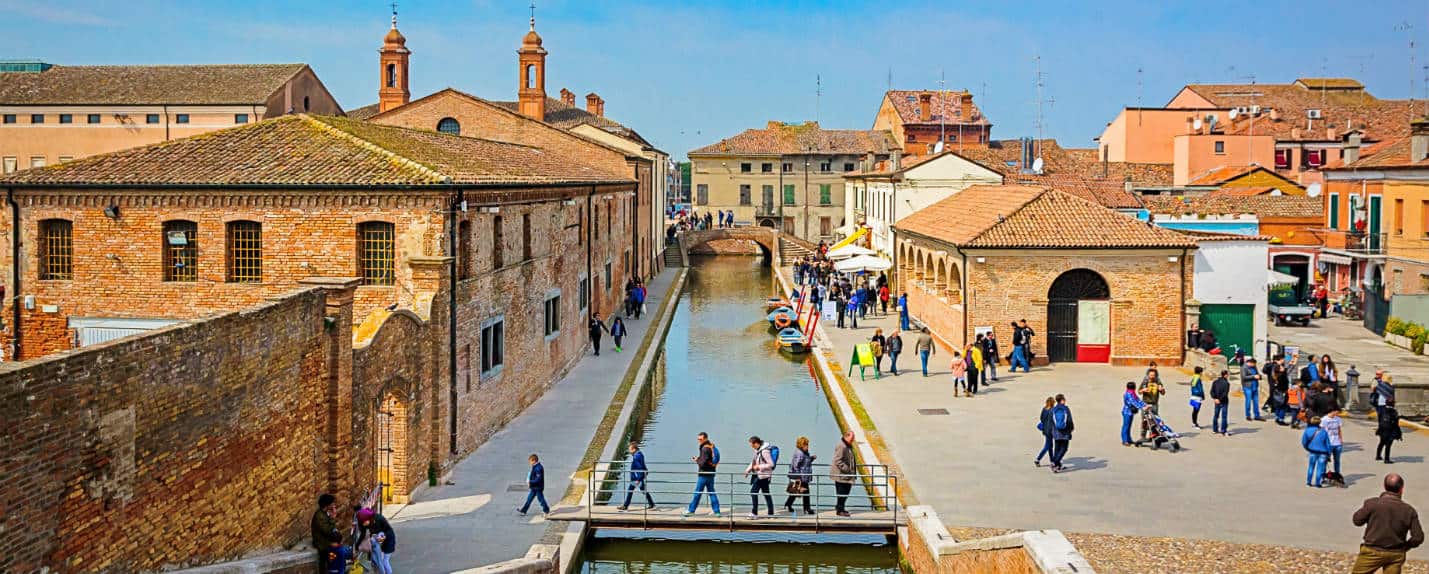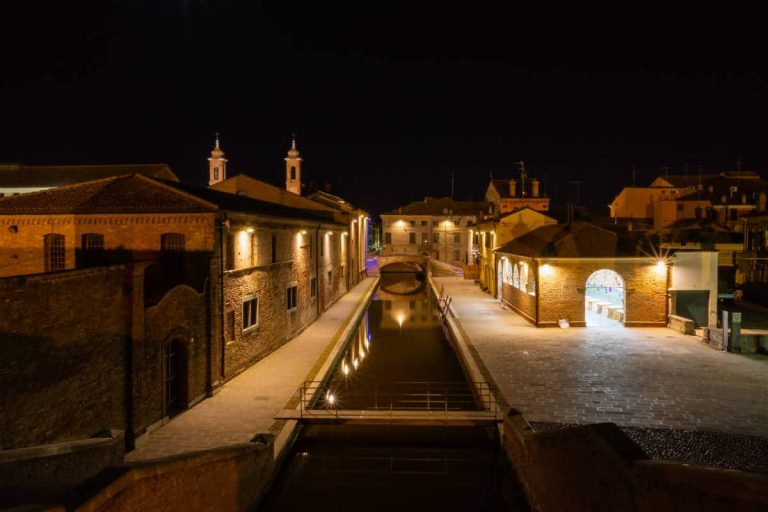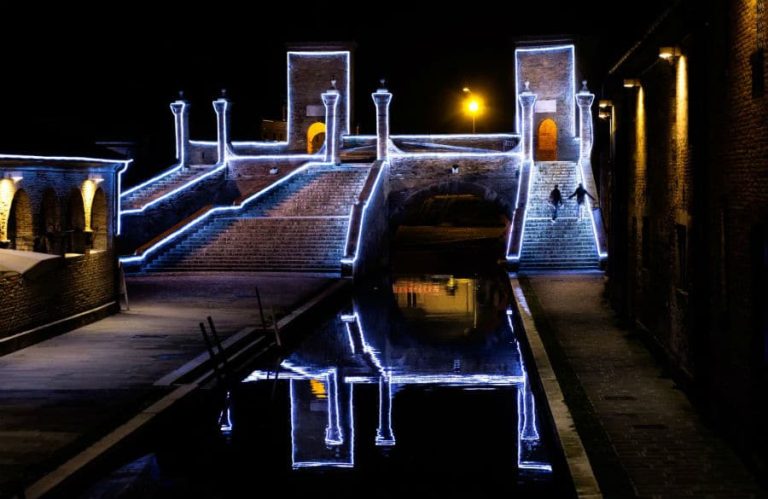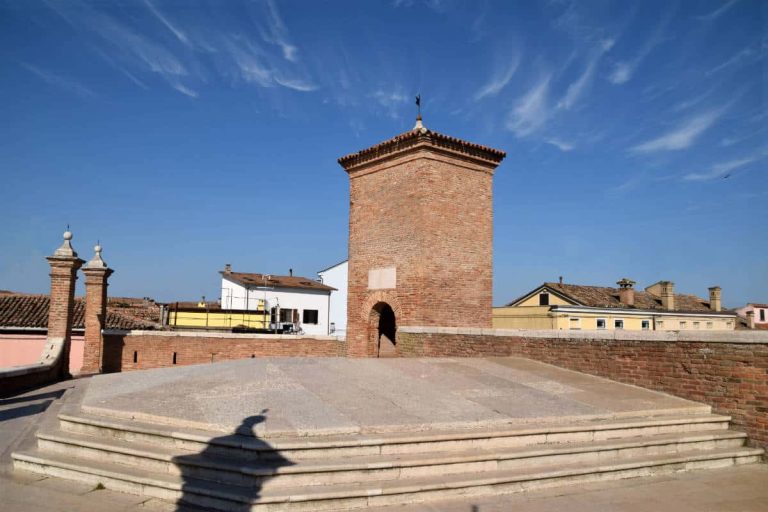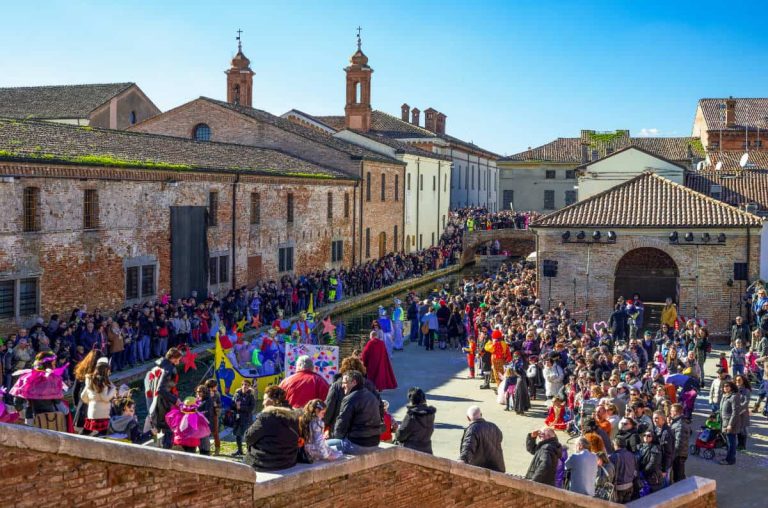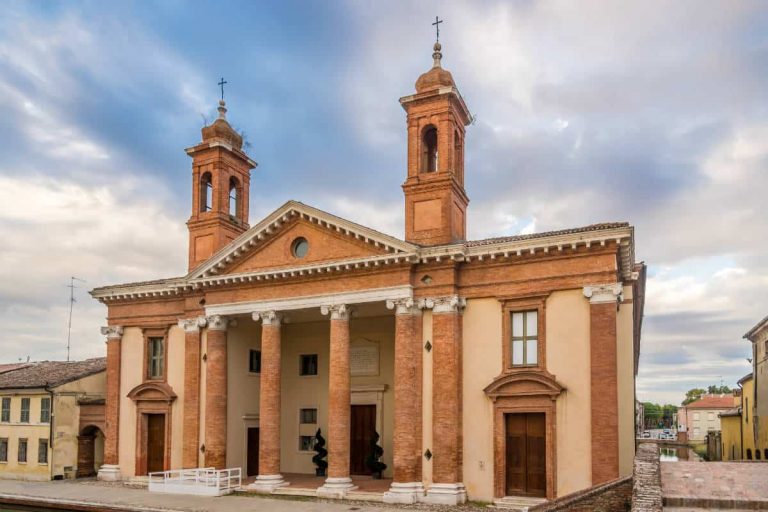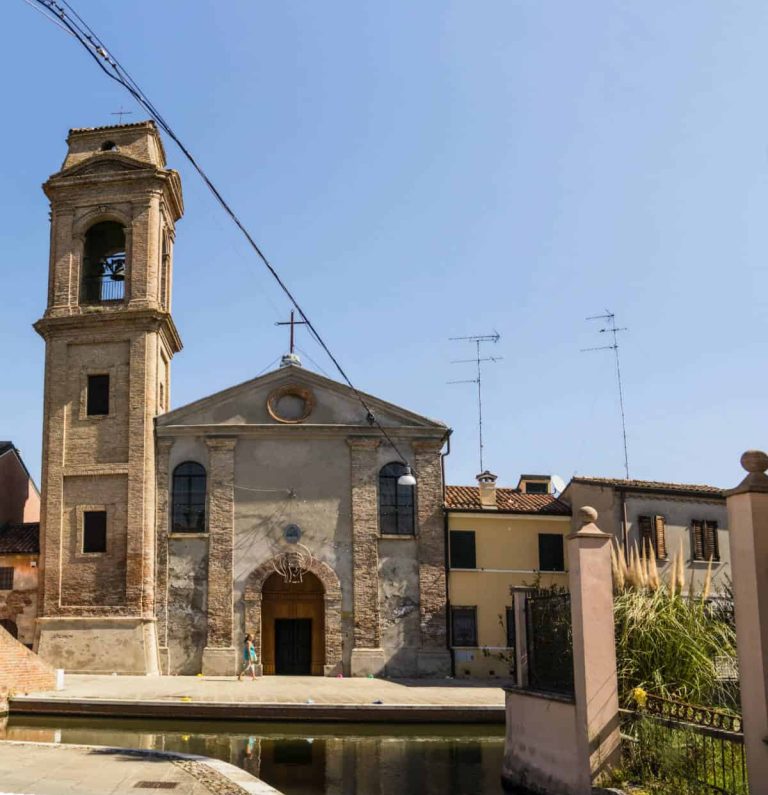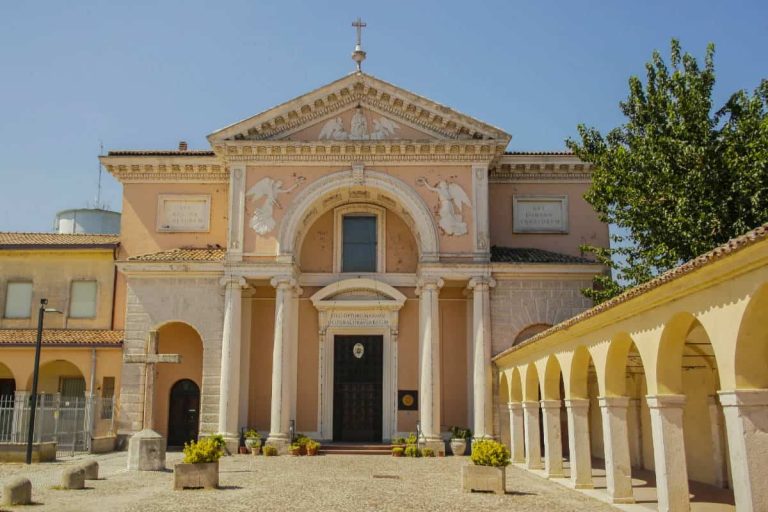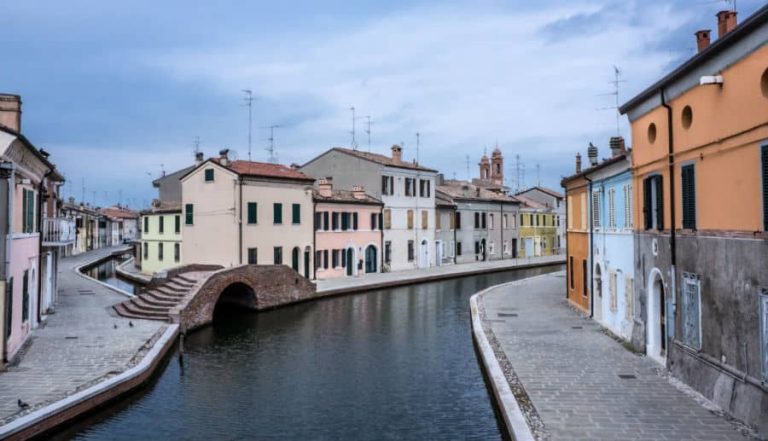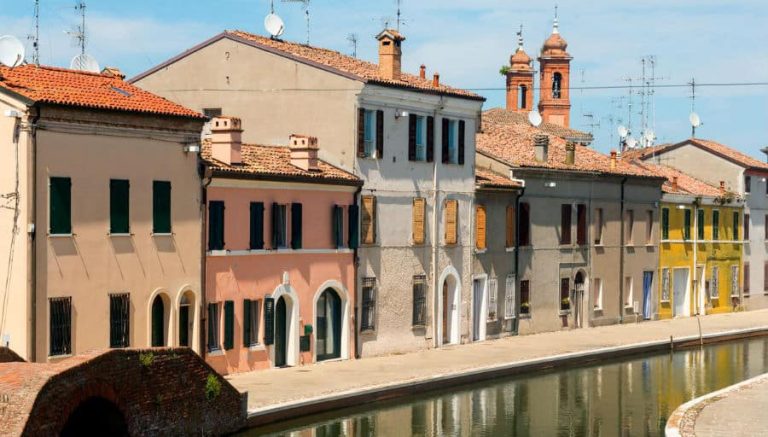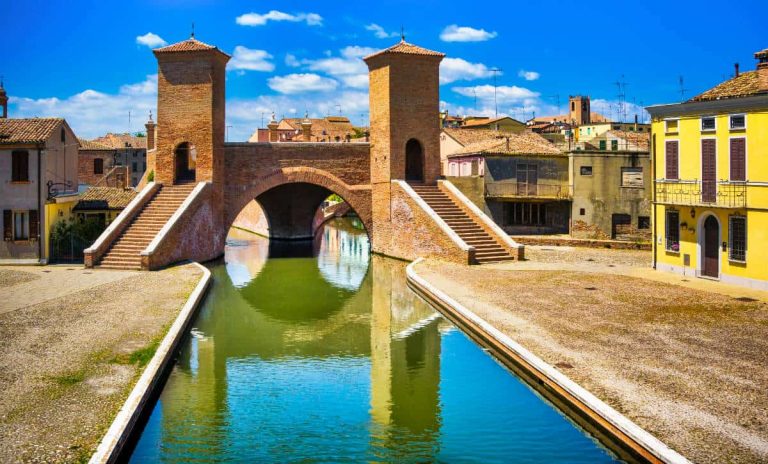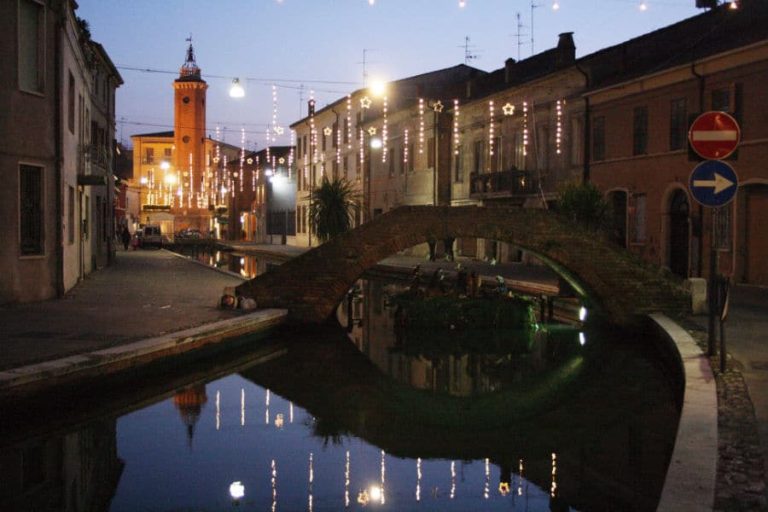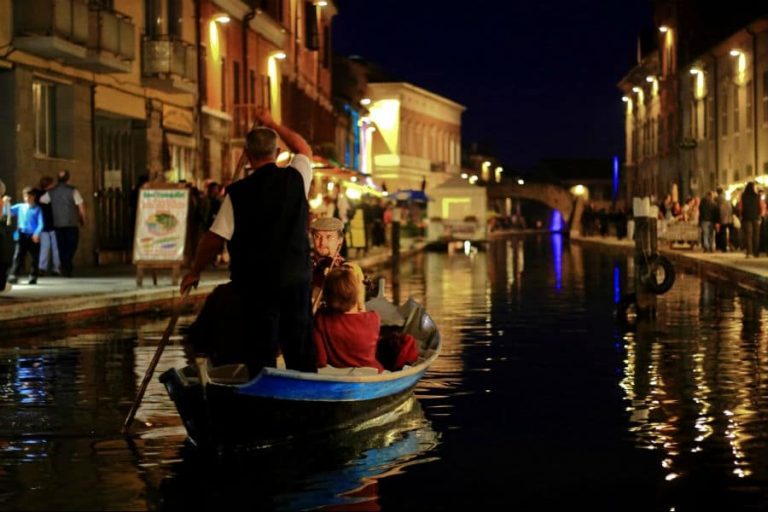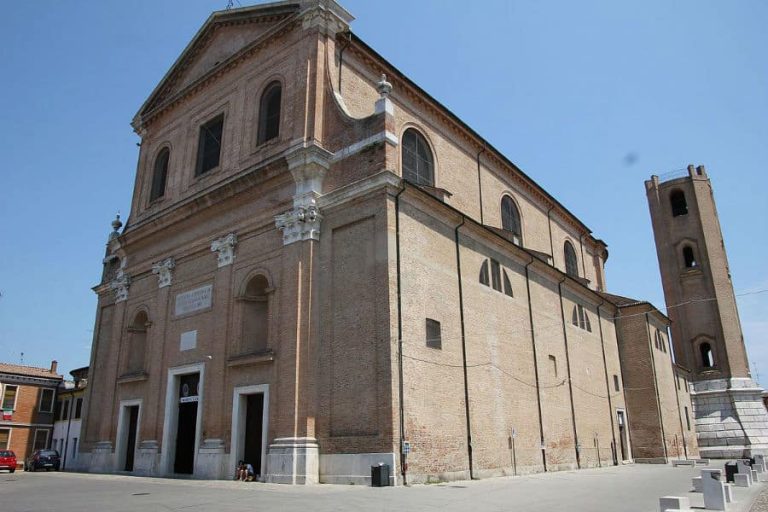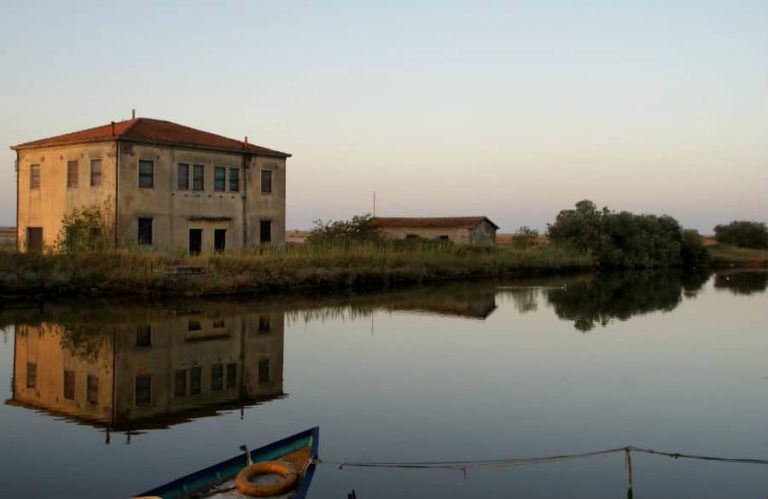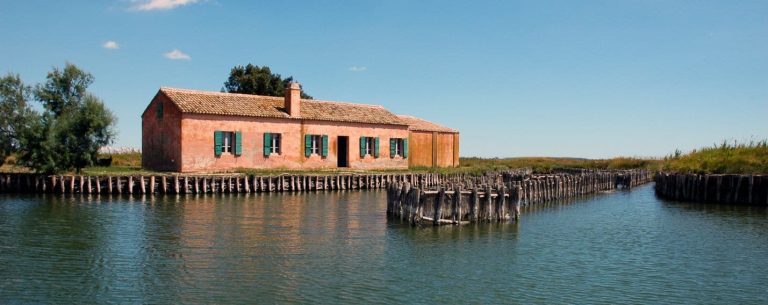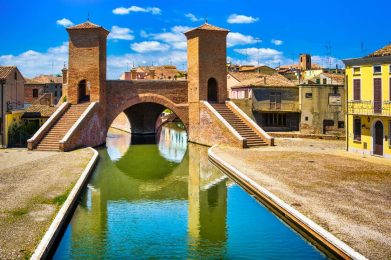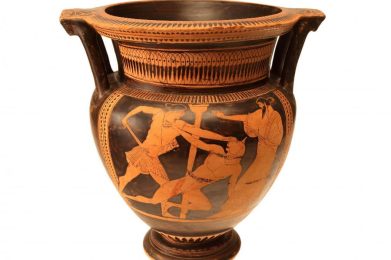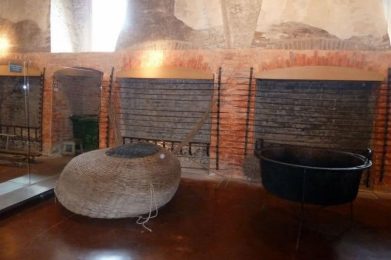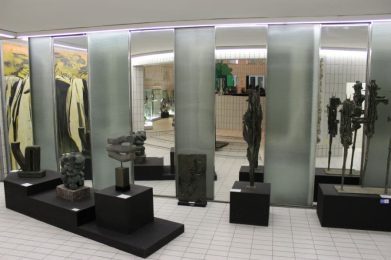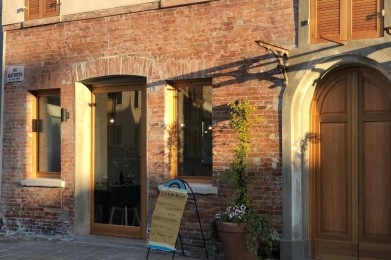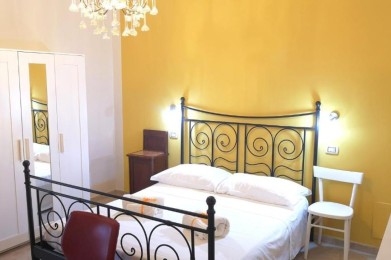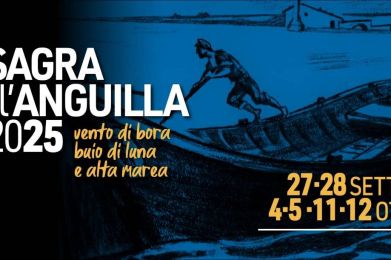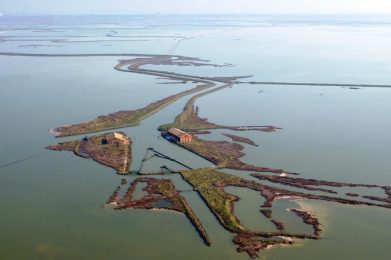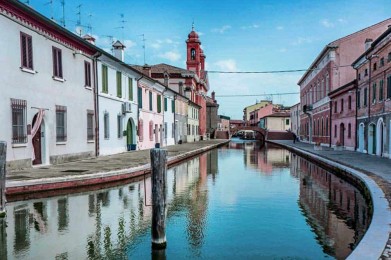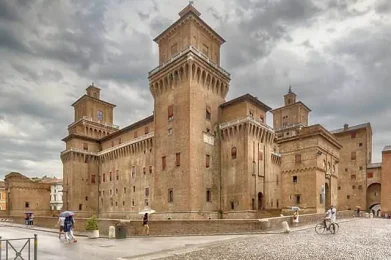Comacchio (Cmâc' in local dialect comacchiese) was born as a village of the lagoon and its insularity remained so until 1821, when it was built the embankment road that connects it to Ostellato.
Under the landscape and historical is one of the major centers of the Po Delta Park. Originated about two thousand years ago, during its history it was subjected to the power of the Exarchate of Ravenna before, the Duchy of Ferrara in below, to return then to the part of the territories of the Pontifical State.
The etymology of the name is uncertain (greek-latin cumaculum= "Small Wave"; "grouping dossi" in Etruscan). The foundation is attributed to the Etruscans, who were already allocated in the Po Delta. Near Comacchio was in fact the Etruscan town of Spina.
Sort on the union of thirteen small islands (beads coastal dune) formed by the intersection of the foce of the Po of Primaro with the sea, had to direct its development, both on the floor of the town planning and on that of the economy, on the element of water. Following the fall of the Roman Empire of the West, Comacchio became part of the Exarchate of Italy. The first bishop of the city of which you have memory was Pagaziano (mentioned in 503 and in 504). Comacchio it then passed under the Lombard Kingdom after the Chapter of Liutprando of 715 (which describes the rules and fees charged to comacchiesi to exercise the salt trade in regions of the pianura padana subjection to the longobard authorities).
In the Lombard period the territory was donated to the monks of San Colombano; thus became a possession of the great monastic feud of Bobbio. The monks there allestirono the river port and developed agriculture and breeding. Finally improved exploitation of salt pans, which salt was transported throughout the North of Italy. In the Carolingian period the properties of the salt pans were distributed between the Abbey of Bobbio and the monasteries of San Pietro in Ciel d'Oro di Pavia, of Novalesa, Leno, San Sisto in Piacenza and of the bishopric of Reggio Emilia. Among the centuries from the VI to IX Comacchio dispose of one of the most powerful fleets of the Adriatic entering directly in competition with Venice.
But Venice is not accepted the presence of a rival in the same geographical area. In the year 866 The Venetians occupied Comacchio and sacked a first time. In the 875 Venice itself was threatened by the incursions of the Saracens, who rushed against Comacchio, incendiandola. Five times in the High Middle Ages Comacchio was besieged and taken by the Repubblica Marinara, until it passed under the dominion of the Estensi in 1299. With the exhaustion of the Este dynasty, in 1598 it returned under the jurisdiction of the Church which he put in the fledgling the Legation of Ferrara. Comacchio became part of the Papal State until March 1860, when the territories of the former ligations were annexd to the Kingdom of Sardinia for effect of Plebisciti.
Comacchio is also known for its Seven Lidi, distributed in vast stretches along the coast from the foci of Rhine river up to the Po of Volano, affecting the Po Delta Regional Park: flywheel, nations, Pomposa, Chess, Porto Garibaldi, Estensi and plug.
The main activities are currently connected to tourism, Summer in his seven shores, to commercial fisheries to fish-breeding in the lagoon and in the past, the production of salt whose trade was reason for harsh disputes with the Serenissima Republic of Venice. Also very important to the activities linked to the Manifattura delle marinated eel.
Comacchio is appreciated for having kept intact in the time a good part of its architectural features characterized by the presence of channels, palaces and monumental bridges (the most characteristic of which is that of Trepponti) which give the typical appearance of the lagoon cities that are more at north, for example Chioggia and other cities of the Venetian lagoon. For this reason it is also known as The Little Venice.
The traditional marinated Eel from Comacchio Lagoons is the garrison SlowFood. Other typical dishes and products of the comacchiese tradition are the loaf with pumpkin violina, ciambellini comacchiesi (small donuts of ferrarese bread), the anguillette comacchiesi sweets, the piadina comacchiese pumpkin, the Topino d'Ognissanti (a shackle in the shape of a mouse that is prepared in the first two days of November with the same mixture of sweet anguillette).

